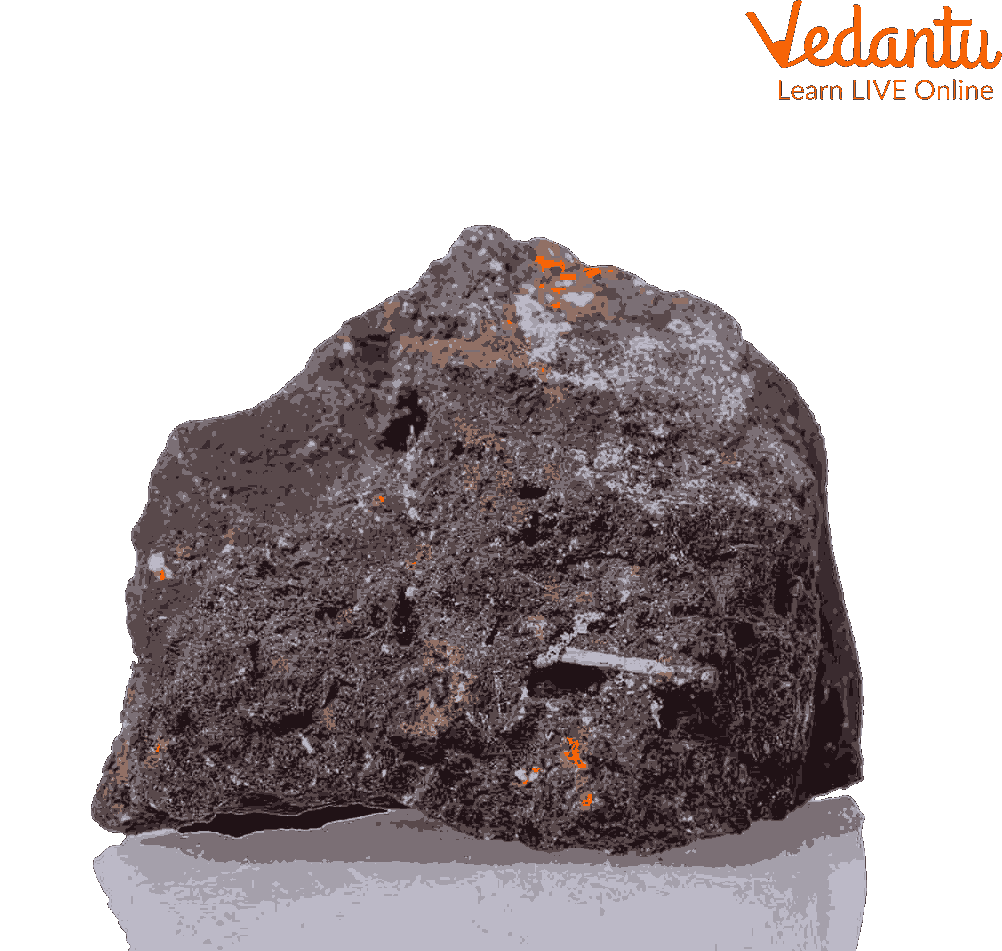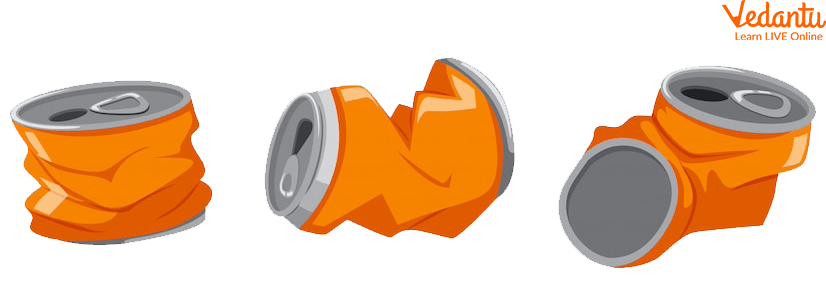




Real-Life Examples and Benefits of Tin in Daily Life
Tin can be bent by hand with minimal effort because it's soft enough to cut with little force. Due to twinning in tin crystals, the "tin cry" can be heard when bent; indium, cadmium, zinc, and mercury in solid form also exhibit this characteristic. Tin is a delicate silvery-white metal that melts quickly and is very light. It's a soft metal, and that's why it's mixed with other metals.

An Isolated Solid Tin.
About Tin
The mineral cassiterite is the source of the soft, silver-blue metal known as tin. It is a base metal frequently used to make alloys with other metals. The most popular tin alloys are bronze and pewter. Tin has two primary oxidation states, +2 and the somewhat more stable +4, and has chemical properties with both of its neighbours in group 14, germanium and lead.
Properties of Tin
It is a soft, malleable metal with a bluish-white colour and an atomic number of 50.
According to estimates, tin makes up about two parts per million of the earth's crust.
Water and oxygen have little impact on the tin at room temperature. Additionally, it is corrosion-resistant. It is used as a coating for other metals because of this.
When the metal reacts with oxygen and water at higher temperatures, it produces its oxide.
Uses of Tin
Tin is used in the soldering of steel.
It is also employed in producing other alloys, including copper and bronze.
Glass, ceramics, and sensors employ it as a reducing and colouring agent.
It works in the shipping sector as an antifouling chemical for ships and boats to shield them from barnacles.
It also finds use in battery electrodes, such as those used in Li-ion batteries.

Two Tin Cans, Which are Smaller Than the Other.
5 Uses of Tin in Daily Life
Tin is being used in various ways, such as for making alloys.
Since it has strong corrosion resistance, it is utilised in tin plating, coating, and polishing.
It is frequently employed in the production of steel food containers.
Superconductive wires are produced using tin alloys.
Most window glass is manufactured by floating molten glass over the molten tin to create a flat surface.
Most tin is utilised as an alloy with other metals like lead or zinc or as a protective coating.
Tin is used in glass production, bearing alloys, coatings for steel containers, solders for connecting pipes or electrical/electronic circuits, and other tin chemical use.
Tin Coated Metals
Tin plating is frequently used to defend against corrosion, oxidation, and erosion when exposed to the environment. Copper and other metals don't react as much. Plating the tin onto the metals prevents corrosion.
Tin plating is an industrial procedure where a thin layer of tin is applied to metal items.
Steel, iron, and copper are just a few of the many base metals that can be processed using this method.
Conclusion
Tin has likely been most useful historically in producing bronze, an alloy of copper, tin, and other metals that brought about the Bronze Age and altered civilization. Compared to zinc, copper, and lead, which have abundances of 94, 63, and 12 parts per million (ppm), tin is a relatively rare element with a 2 ppm abundance in the earth's crust. Placer deposits are used to make the majority of the world's tin, at least half of which originates in Southeast Asia.
FAQs on Uses of Tin Explained for Students
1. What is tin and what is its chemical symbol?
Tin is a soft, silvery-white metal known for being highly resistant to corrosion. Its chemical symbol is Sn, which is derived from its Latin name, 'stannum'. It is a key element in many everyday applications because it is non-toxic and malleable.
2. What are the main uses of tin in industries?
Tin has several important industrial uses. The most common ones include:
- Tin Plating: It is used to coat stronger metals like steel to create tin cans, which prevents rust and protects the contents.
- Making Alloys: It is mixed with other metals to create useful alloys. For example, bronze is made by mixing tin and copper, and solder is made by mixing tin and lead.
- Glass Manufacturing: Molten tin is used to create a perfectly flat bed on which molten glass is floated to produce flat sheets of glass.
3. How do we use tin in our everyday life?
In daily life, you most often encounter tin as the protective lining inside food and drink cans. This thin layer of tin stops the metal can from rusting and reacting with the food. Tin is also a crucial part of solder, which is used to connect components in electronic devices like smartphones, televisions, and computers.
4. Why is tin a better choice for coating food cans than other metals?
Tin is the preferred choice for coating food cans for two main reasons. Firstly, it is highly corrosion-resistant, meaning it does not rust or react with acids commonly found in food. Secondly, and most importantly, tin is non-toxic to humans, which makes it completely safe for direct contact with food products.
5. Is the 'tin foil' we use in the kitchen actually made of tin?
No, this is a common misconception. The shiny, flexible foil used for cooking and wrapping food is actually made from aluminium. The term 'tin foil' is a holdover from the past when a similar product was once made from a thin sheet of tin.
6. What are some important alloys of tin and why are they useful?
An alloy is a mixture of metals. Tin is used to create several important alloys with enhanced properties:
- Bronze: An alloy of tin and copper. It is much harder than pure copper and is used to make statues, bells, and bearings.
- Solder: An alloy of tin and lead. It has a low melting point, making it perfect for joining metal wires and electronic components.
- Pewter: An alloy of tin with small amounts of copper and antimony. It is used to make decorative items like mugs and plates.
7. Where does tin come from?
Tin is not found as a pure metal in nature. It is primarily extracted from a mineral called cassiterite, which is tin oxide (SnO₂). This mineral is mined from the Earth's crust, with major deposits located in countries like China, Indonesia, and Peru.









